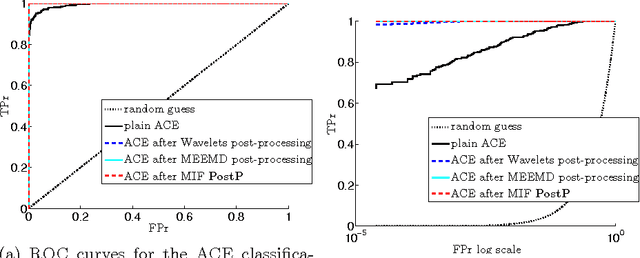Jingfang Liu
Hyperspectral Chemical Plume Detection Algorithms Based On Multidimensional Iterative Filtering Decomposition
Dec 07, 2015



Abstract:Chemicals released in the air can be extremely dangerous for human beings and the environment. Hyperspectral images can be used to identify chemical plumes, however the task can be extremely challenging. Assuming we know a priori that some chemical plume, with a known frequency spectrum, has been photographed using a hyperspectral sensor, we can use standard techniques like the so called matched filter or adaptive cosine estimator, plus a properly chosen threshold value, to identify the position of the chemical plume. However, due to noise and sensors fault, the accurate identification of chemical pixels is not easy even in this apparently simple situation. In this paper we present a post-processing tool that, in a completely adaptive and data driven fashion, allows to improve the performance of any classification methods in identifying the boundaries of a plume. This is done using the Multidimensional Iterative Filtering (MIF) algorithm (arXiv:1411.6051, arXiv:1507.07173), which is a non-stationary signal decomposition method like the pioneering Empirical Mode Decomposition (EMD) method. Moreover, based on the MIF technique, we propose also a pre-processing method that allows to decorrelate and mean-center a hyperspectral dataset. The Cosine Similarity measure, which often fails in practice, appears to become a successful and outperforming classifier when equipped with such pre-processing method. We show some examples of the proposed methods when applied to real life problems.
 Add to Chrome
Add to Chrome Add to Firefox
Add to Firefox Add to Edge
Add to Edge